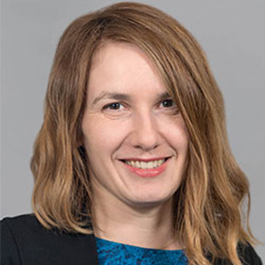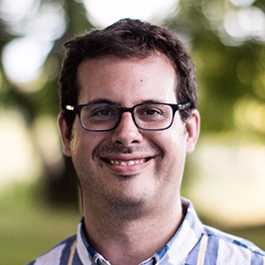Three Faculty Members Join Design Research Cluster
Jessica Hullman, Noshir Contractor, and Nick Diakopoulos lead research efforts focused on design problems
This year, three faculty members have joined the Design Research Cluster: Jessica
Design researchers create practical solutions and theory through a design process of focusing, understanding, defining, conceiving, building, and testing. Co-sponsored by the Segal Design Institute, Northwestern Engineering, and The Graduate School, the Design Research Cluster brings together interdisciplinary faculty and
Meet the newest members of the Design Research Cluster:
 Jessica
Jessica Hullman
Jessica
Q: Why are you excited to be a part of the Design Research Council?
JH: Computer science is always the result of human design processes, whether its interfaces, algorithms, or systems. The Design Research Council is a great way to remain aware of this and to exchange ideas with other researchers. Liz [Gerber]'s vision brings the sort of cutting edge perspectives on
Q: Tell us about your current work with Design Research
JH: I'm working with Cindy Xiong, who is leading a project aimed at understanding how different visual representations of correlated data may contribute to people inferring causal relationships. Through controlled experiments on different representations, we are hoping to better understand how to design visualizations of multivariate data in ways that prevent people from jumping to false conclusions.
Q: How do you see your own scholarship intersecting with design?
JH: My research concerns data visualization, in particular representations and interactive interfaces for supporting reasoning about error and uncertainty. I see understanding the design process as critical to any work aimed at improving how data is presented. For example, to build tools that improve how people present data requires understanding how designers and other visualization creators think about their users' knowledge, needs and abilities related to uncertainty information, and what incentives them to show versus
 Noshir Contractor
Noshir Contractor
Noshir Contractor is the Jane S. & William J. White Professor of Behavioral Sciences in the McCormick School of Engineering & Applied Science, the School of Communication and the Kellogg School of Management. He is also the Director of the Science of Networks in Communities (SONIC) Research Group at Northwestern.
Q: Why are you excited to be a part of the Design Research Council?
NC: This is an unprecedented initiative to bring together diverse disciplinary perspectives on design. The word design, like
Q: Tell us about your current work with Design Research
NC: I am working with Diego Gomez-Zara who is a Ph.D. student in the interdisciplinary Technology and Social Behavior (TSB) program. He has been passionate about how the design of technologies to assemble dream teams informs and is in turn informed by, the social science research on designing dream teams
Q: How do you see your own scholarship intersecting with design?
NC: My scholarship has largely been informed by drawing insights about social phenomena from a networks perspective. Network Science is in large part focused on understanding the emergence of networks (i.e. how they form) and the outcomes resulting from these networks (i.e. how they perform). This understanding is critically important to the design of social networks optimized in a wide variety of contexts ranging from addressing global health challenges, managing "Mission to Mars,” or anticipating the impact of automobile features on car purchasing decisions.
 Nicholas (Nick) Diakopoulos
Nicholas (Nick) Diakopoulos
Nick Diakopoulos is an Assistant Professor in Communication Studies and Computer Science (by courtesy) at Northwestern University where he is Director of the Computational Journalism Lab.
Q: Why are you excited to be a part of the Design Research Council?
ND: I'm thrilled for the opportunity to engage with the amazing design community we have on campus at Northwestern, including both a range of interdisciplinary faculty and students. I'm hoping to bring some of the ideas discussed at our meetings back into the classroom and into my research in developing tools and services to enable computational journalism.
Q: How do you see your own scholarship intersecting with design?
ND: My primary research area is in computational journalism -- the production of news information with, by, and about algorithms. I believe that we can design a better more sustainable and resilient future for journalism by applying design processes and techniques for prototyping, evaluating, and streamlining various new products and services that harness the power of computing in new ways for the journalistic enterprise.
